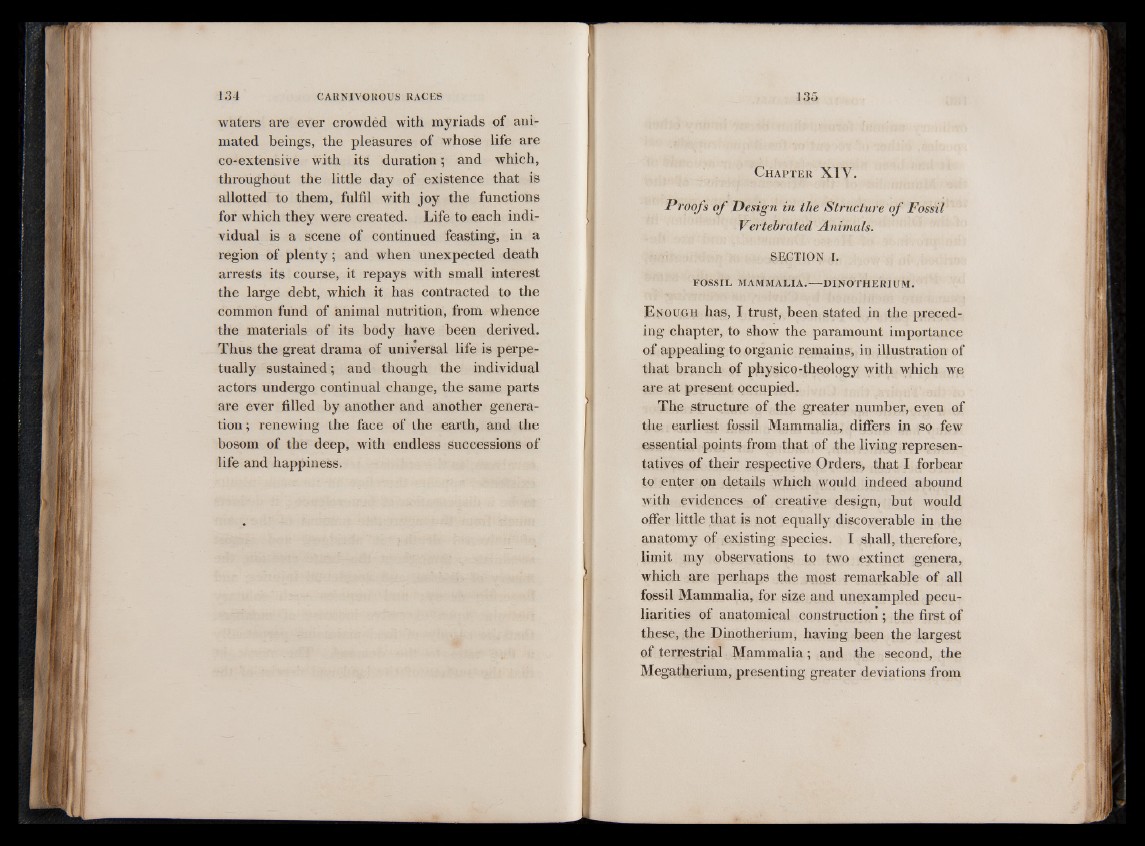
waters are ever crowded with myriads of animated
beings, the pleasures of whose life are
co-extensive with its duration; and which,
throughout the little day of existence that is
allotted to them, fulfil with joy the functions
for which they were created. Life to each individual
is a scene of continued feasting, in a
region of plenty; and when unexpected death
arrests its course, it repays with small interest
the large debt, which it has contracted to the
common fund of animal nutrition, from whence
the materials of its body have been derived.
Thus the great drama of universal life is perpetually
sustained; and though the individual
actors undergo continual change, the same parts
are ever filled by another and another generation
; renewing the face of the earth, and the
bosom of the deep, with endless successions of
life and happiness.
C h a p t e r XIV.
Proofs o f Design in the Structure o f Fossil
Vertebrated Animals.
SECTION I.
FOSSIL MAMMALIA.— DINOTHERIUM.
E n o u g h has, I trust, been stated in the preceding
chapter, to show the paramount importance
of appealing to organic remains, in illustration of
that branch of physico-theology with which we
are at present occupied.
The structure of the greater number, even of
the earliest fossil Mammalia, differs in so few
essential points from that of the living representatives
of their respective Orders, that I forbear
to enter on details which would indeed abound
with evidences of creative design, but would
offer little that is not equally discoverable in the
anatomy of existing species. I shall, therefore,
limit my observations to two extinct genera,
which are perhaps the most remarkable of all
fossil Mammalia, for size and unexampled peculiarities
of anatomical construction ; the first of
these, the Dinothérium, having been the largest
of terrestrial Mammalia ; and the second, the
Megatherium, presenting greater deviations from